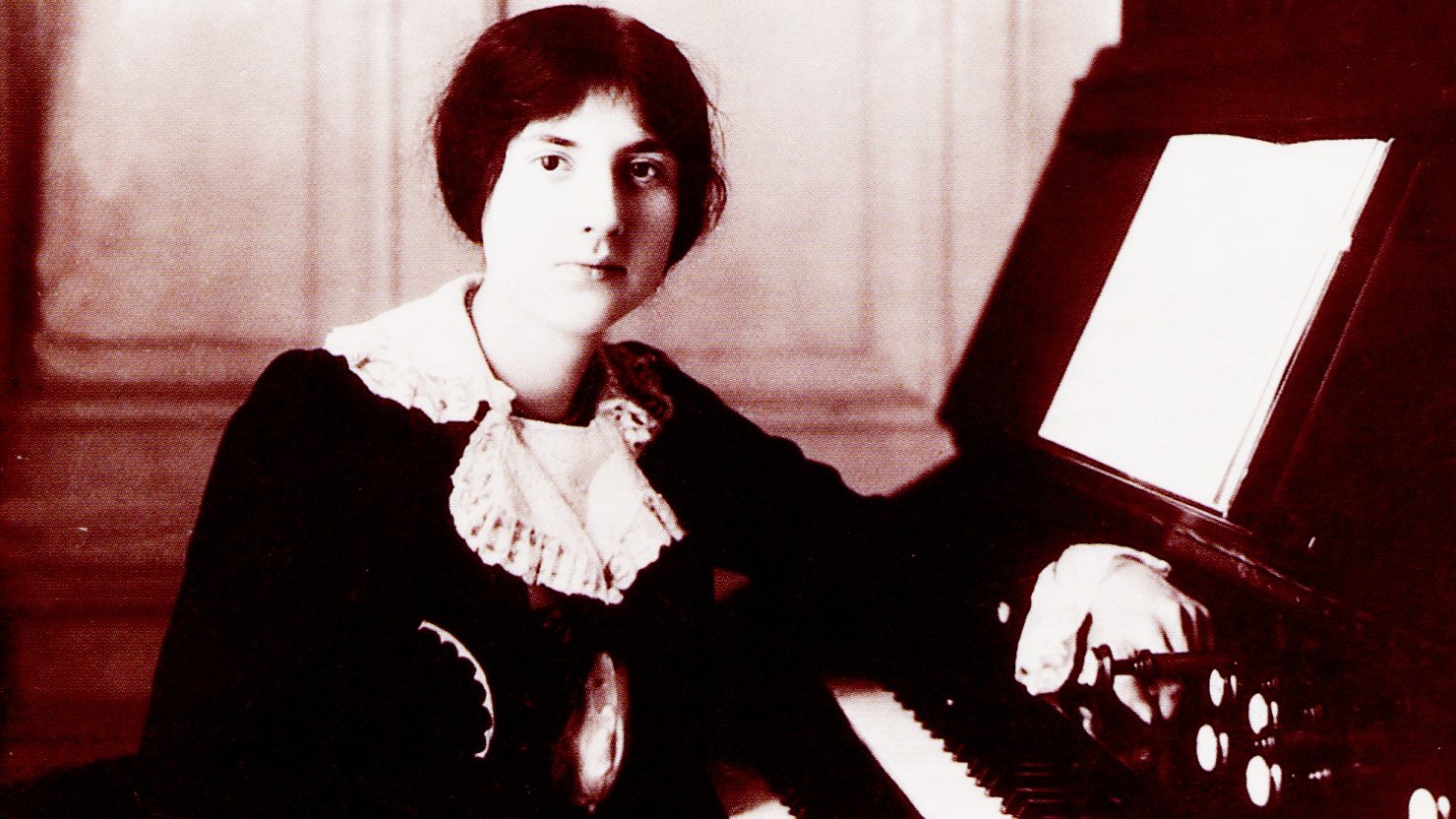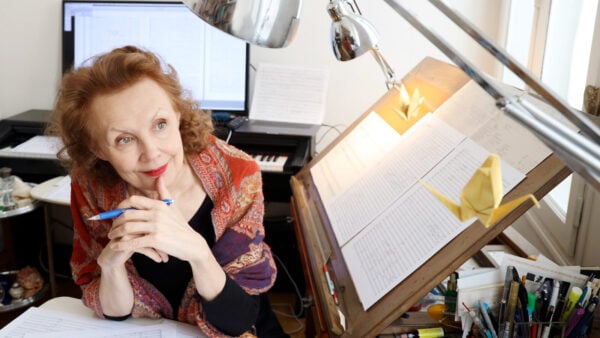
Lili Boulanger, 1913
Bright, innovative, and extremely talented, Lili Boulanger can only be described as a prodigious musician. She studied and performed on piano, violin, cello, harp, and organ and broke barriers as a woman in composition.
Lili Boulanger’s tragic death at the age of 24 from intestinal tuberculosis cut short a flourishing musical career. At the time of her death, she had become the first woman to ever win the Prix de Rome composition award, had garnered praise from composers like Fauré and Debussy, and had begun work on an opera with Maurice Maeterlinck (playwright of Pelléas and Mélisande).
Nadia Boulanger, Lili's older sister, was a composer, conductor, and musician perhaps best known in her role as a teacher, mentoring many of the 20th century’s greatest composers — from Aaron Copland to Philip Glass, Quincy Jones to Astor Piazzolla.
Compared to Nadia, Lili's talents and achievements had for a while been lost to history… that is, until recently. Lili was six years Nadia’s junior, but age didn’t stop her from participating in her sister’s musical activities growing up, tagging along to classes at the Paris Conservatoire and then studying with some of the best teachers in the school. It was also her sister Nadia’s compositions that inspired Lili to begin composing herself.
Despite her brief life, the music Boulanger created showcased a distinct voice that rivaled that of her contemporaries. Her style skewed towards Impressionism, with surprising turns of phrases, gorgeous choral arrangements, and post-Romantic harmonies. Renewed interest in the composer has luckily resulted in an uptick of recordings becoming publicly available, especially as the classical music industry seeks to recognize and rediscover artists whose works had been previously overlooked.
In celebration of Lili Boulanger’s birthday, August 21, here are eight of her works that you absolutely ought to know. [Jump to playlist]
1. Nocturne, 1911
What it is: One of Lili Boulanger’s first works, written for piano and a treble-clef instrument.
Why you should listen: It is one of her few works that does not feature choral music, and shows a wonderful glimpse into the composer’s early post-romantic leanings. It is a little more reserved than her later works, with a gorgeous main theme that shines after a moment of building up, like sunlight peeking through the clouds.
2. Les sirènes (The Sirens), 1911
What it is: A work for chorus, piano, and one mezzo-soprano soloist, Les sirènes was composed for the preliminary round of the 1911 Prix de Rome when Boulanger was about 18 years old.
Why you should listen: Boulanger takes extending the resolution of a chord to a new level here, shying away from arrival moments until they’re absolutely necessary, and then some. The choral writing is simply ethereal, with soaring vocals that echo back and forth between the sections. Be on the lookout for the middle section, featuring a solo vocal line over the high broken chords on the piano.
3. Faust et Hélène (Faust and Helen), 1913
What it is: This cantata for orchestra and soloists, was awarded the Prix de Rome in 1913.
Why you should listen: For one thing, this piece is an incredible demonstration of musical text painting. The harmonies that appear in Faust and Helene’s romantic moments are rich, with the tenor rising above the soprano line for a brief moment at the end of the love scene. This beautiful music is contrasted severely with dramatic strings to highlight the futility of Faust and Hélène’s love, and ends with music spiraling downwards into hell. With all of its intricacies, it's hard to believe this piece was written over the course of just three weeks!
4. Trois Morceaux (Three Pieces), 1914
What it is: A set of three pieces for solo piano.
Why you should listen: Solo piano with quartal and quintal harmonic styles makes it seem impressionistic like Debussy, but with surprising harmonic turns of phrase that seem to pull at times from jazz harmony. The three pieces explore various sentiments: melancholy with D’un Vieux Jardin, a dreamy waltz in D’un Jardin Clair, and lively joviality in Cortège.
5. Clairières dans le ciel (Clearings in the Sky), 1914
What it is: A setting of 13 poems by Francis Jammes for piano and solo voice.
Why you should listen: In addition to having simpler instrumentation than many of Boulanger’s other works, Clairières dans le ciel also stands out in its dreamy optimism. Whereas many of Boulanger’s works carry an air of despair, this suite, and in particular its first two movements, are light, delicate, and beautiful.
6. Psalm 130: ‘Du fond de l’abîme’ (From the depths of the abyss), 1917
What it is: A musical contemplation on Psalm 130 from the Bible. The direct English translation of its title is “From the bottom of the Abyss.” It is dedicated to the memory of Boulanger’s father, who died when she was only seven years old. However, the piece’s haunting nature and the timeframe during which it was composed have led some to believe that this piece also invokes the horror of World War I.
Why you should listen: Simply put… it’s epic in its eeriness. An ominous rumbling of the timpani and slow build of the low instruments gives way to dissonant organ underscoring a trombone melody. This hybrid choral and orchestral piece is heart-wrenchingly beautiful in its sorrow. Be on the lookout for the heavenly chorale that happens around the 2/3rds mark of the piece.
7. Vieille prière bouddhique (Old Buddhist Prayer), 1917
What it is: A work for chorus, orchestra, and tenor soloist using text from a French translation of a Buddhist daily prayer.
Why you should listen: It is one of Boulanger’s most meditative works. Use of simple repeating melodies in a whole tone scale, set over rich orchestral harmonies, give the piece a hypnotic feeling that changes suddenly in the last 45 seconds of the piece.
8. Pie Jesu, 1918
What it is: The final piece of music that Lili ever wrote. She dictated the work to her sister, Nadia, when she was too tired to write herself.
Why you should listen: The music is very intense and anguished, but culminates in a calm acceptance with the final words… “Amen”.






